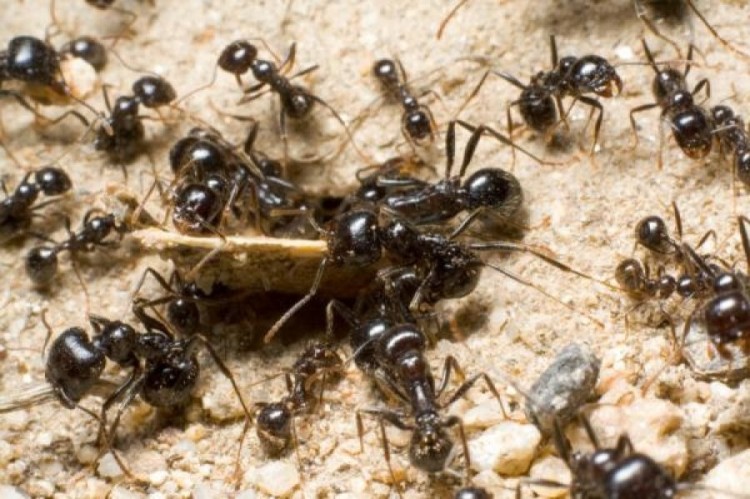As humans, we tend to love getting a leg up in this world but no matter many breaks we get, our gams will never compare to that of crawling insects. For one, they’ve got a lot more of them than we do and each one is a pretty impressive piece of engineering. How so? Let’s grab magnifying glasses and take a quick look at what crawling insects have going for them in terms of their basic anatomy:
Crawling Insects Beat Crawling Humans, Knees Down
Unlike mankind, an insect’s leg typically has at least five joints. So crawling insects tend to be extremely dexterous and have a great ability to multitask. For instance, many insects can use their gams to dig complicated burrows, communicate with audio signals, collect, carry and taste food. When’s the last time you met a human that could do those things using just his or her legs? We’ve yet to meet one and we’re sure most people from Nebraska can say the same.
In addition, crawling insects’ exoskeletons tend to make them powerful, speedy creatures too. Case in point, Journal of Experimental Biology writers once noted that some species of cockroaches may reach crawling speeds close to 4 miles per hour. Studies have shown that humans, on the other hand, tend to fall short of that. Plus, our six-legged pests are also able to crawl vertically across completely smooth surfaces without taking a tumble. We’ve yet to see a human do that unassisted as well but it doesn’t make crawling insects invincible pest control companies have the means to beat crawling insects no matter how deftly they can climb, move or hide.
Which Crawling Insects Are Worst in the Home?
This brings us to Nebraska’s crawling insect population. It’s huge, no doubt, but there are a few in the Omaha area that humans should be especially wary of. Among them are stag and dermestid beetles. Although their diets vary significantly, both crawling insects will eat items commonly found in Omaha homes and businesses. Examples include, but aren’t restricted to upholstered furnishings, wood, wall-to-wall carpeting and throw rugs. In addition to doing damage, there are also crawling insects in Omaha that may bite or sting and potentially transmit diseases. We’ve listed a few additional offenders below:
• Eastern Subterranean Termites
• American Cockroaches
• Carpenter Ants
• Earwigs
What’s the Best Time to Conquer Crawling Insect Colonies?
Although crawling insects each have their own life cycles, many tend to be in their most active phases now. This is primarily due to favourable, environmental conditions. For example, during the summer months, the average high in Omaha is somewhere between 72 and 85 degrees Fahrenheit. That’s just the right temperature for crawling insects to thrive, including the Eastern subterranean termite and others mentioned on our offenders list. When temperatures drop below that, they tend to exhibit heat seeking behaviours similar to some humans. What are those heat seeking behaviours?
For one, they may look to nest inside your home and businesses more aggressively. Once inside, they may use indoor temperatures, human or pet foods and moisture to continue on with their respective growth cycles. Or, they may find a safe place to hunker down indoors with their colony until the outside temperatures begin to heat up again. Either way, such behaviours are problematic for humans and their pets. Therefore, you must be on guard for telltale signs of crawling insects at all times.
Need More Help Kicking Crawlers to the Curb?
To learn more about crawling insects and how to manage their populations throughout the year, please contact Miller Pest & Termite, your trusted Omaha exterminator. We excel in getting rid of Nebraska’s most troublesome, crawling insects including the ones we mentioned above and more. In addition, we can help ensure that the most problematic crawlers don’t return with the aid of our effective barriers.



